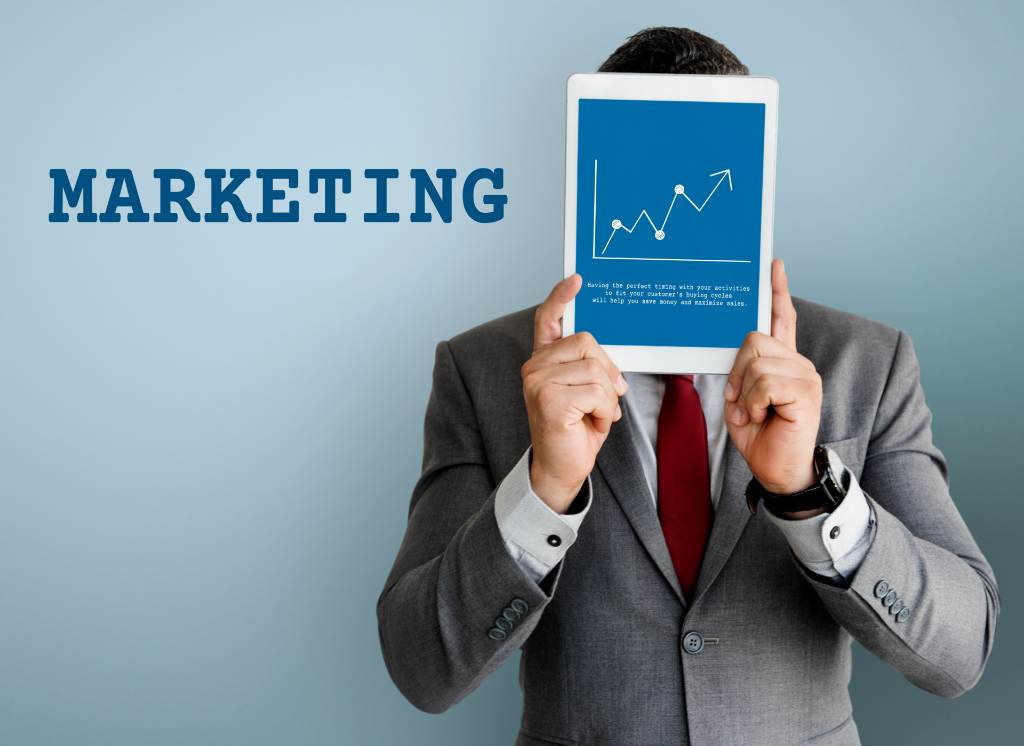 When your marketing is aligned, focused, and driven by data, results follow. The most effective brands grow by making strategic decisions that amplify what’s working and create lasting impact across every channel.
When your marketing is aligned, focused, and driven by data, results follow. The most effective brands grow by making strategic decisions that amplify what’s working and create lasting impact across every channel.
These seven moves are designed to boost your digital marketing ROI. Each one helps you reach the right audience, maximize your budget, and build momentum that leads to measurable growth.
1. Set ROI Goals That Match Business Growth Objectives
Every marketing strategy should begin with a clear definition of success. Without specific goals, it becomes harder to measure impact or make informed decisions. Start by asking what your marketing is helping the business achieve. This could include lowering customer acquisition cost, increasing average order value, improving return on ad spend, or raising the lifetime value of a customer.
Once goals are clear, tie them to specific metrics. For example, if your goal is to improve lead quality, you might track conversion rates beyond the initial form fill. If your focus is customer retention, pay attention to repeat purchase rates and engagement post-sale.
Establishing these benchmarks early keeps your team aligned and gives you the data needed to make strategic adjustments as you go. With goals mapped to real business outcomes, it also becomes easier to justify marketing investments and communicate progress across departments.
2. Target High-Intent Audiences to Improve Conversions
Audience targeting plays a major role in marketing performance. Broad campaigns can increase visibility, but the highest returns often come from connecting with people who are actively considering a purchase or looking for a solution like yours.
These high-intent audiences might include users who search specific product names, engage with your pricing page, download a comparison guide, or revisit your website multiple times. They have moved beyond casual browsing and are closer to taking action.
Use your CRM and platform analytics to spot patterns. Look for channels, behaviors, and content types that consistently attract qualified leads or buyers. Then build targeted ad sets, segmented email campaigns, and personalized landing pages around what those users care about most.
When your message meets someone who is already leaning toward a decision, the path to conversion becomes much shorter.
3. Build Content for Every Stage of the Marketing Funnel
Every potential customer is at a different stage of the decision process. Some are just starting to explore a problem. Others are comparing providers. Some are ready to act. Your content should support all of these moments with the right message at the right time.
- Top-of-funnel content creates awareness. This includes blog posts, short videos, social content, and educational resources that answer early questions or introduce a topic. These materials help you attract attention and earn trust.
- Middle-of-funnel content helps prospects evaluate their options. Webinars, product guides, case studies, and comparison pages clarify your value and make it easier for someone to see why you are a fit.
- Bottom-of-funnel content removes hesitation. This is where testimonials, demos, pricing information, and timely offers give buyers the final reassurance they need.
When your content reflects the buyer journey, it creates a smoother path from interest to decision. It also increases the chance that visitors return, engage further, and convert into loyal customers.
4. Use SEO and Paid Search Together to Increase Reach
Search engine optimization (SEO) and paid search are both powerful tools. When used together, they create a stronger presence across search results and give your brand more opportunities to connect with the right people.
SEO builds long-term visibility. It helps your content rank for keywords that match how people search. This generates traffic over time without direct cost per click. Paid search, on the other hand, gives you immediate placement at the top of search results. You can test offers quickly and drive traffic to high-converting landing pages.
By combining both, you get the best of both approaches. For example, if a certain keyword performs well in paid ads, use that insight to build out an SEO-optimized blog or product page. If an organic page is already ranking well, amplify its reach with a targeted ad campaign.
This strategy increases visibility, builds brand trust, and improves the efficiency of your search marketing budget.
5. Use Marketing Analytics to Test and Improve Results
Data is one of your most valuable tools, but its real power comes from how you use it. To improve your marketing ROI, it’s important to approach every campaign with a mindset of testing and learning.
Start by defining what you want to learn or improve. Then run A/B tests on things like ad headlines, email subject lines, landing page designs, or offer timing. Even small adjustments can lead to meaningful improvements in engagement or conversion rate.
Alongside testing, review key metrics that show how users interact with your content. Look at bounce rates, scroll depth, time on site, and assisted conversions. These insights reveal how people move through your funnel and where they may be dropping off.
When analytics guide your decisions, you can refine campaigns faster and focus more budget on the tactics that perform best. Over time, this builds a more agile marketing system that responds to your audience and stays aligned with business goals.
6. Automate Marketing While Keeping a Personal Touch
Automation is one of the most effective tools for scaling marketing without adding extra strain on your team. It supports everything from lead scoring and email follow-ups to chat responses, social scheduling, and budget pacing. When set up well, automation brings structure, speed, and consistency to your marketing systems.
But automation works best when it supports a thoughtful strategy. Every sequence should reflect your customer’s behavior, interests, and stage in the buying journey. An email series triggered by a guide download, for example, could follow up with a relevant case study or product demo. A returning visitor might see tailored on-site messages based on their previous actions.
Review your workflows regularly to keep content relevant and brand-aligned. As your offers or audience evolve, your automation should evolve with them. To strengthen trust, combine automated systems with human touchpoints, such as live support, custom email replies, or timely check-ins from your sales team.
This balance between automation and personalization helps you scale efficiently while still creating authentic, high-quality customer experiences.
7. Focus on Customer Lifetime Value to Maximize ROI
Initial conversions tell only part of the story. The greatest return often comes from customers who stay engaged over time, make repeat purchases, refer others, or expand into additional services. To truly understand marketing ROI, look beyond the first sale.
Use your CRM and analytics tools to identify patterns among your highest-value customers. What channels brought them in? What content or campaigns did they engage with? Which touchpoints helped them move from interest to commitment?
When you know what drives long-term value, you can focus more of your budget on the strategies that bring in similar customers. You can also refine your message to speak directly to the traits and priorities that matter most to them.
This shift from short-term wins to long-term relationships gives your marketing strategy more stability and makes it easier to scale responsibly.
Work with a Digital Team That Helps You Grow
Lasting marketing results come from clarity, consistency, and execution that supports your business at every stage. These seven moves are just the beginning. They lay the groundwork for a digital strategy that adapts, scales, and performs over time.
At Blueprint Digital, we partner with B2B and B2C brands to build full-funnel marketing systems that generate measurable returns. Our team combines SEO, paid media, email marketing, conversion optimization, campaign management, and more to help you reach the right people and get more from every marketing dollar.
Looking to improve ROI and grow with a strategy built around your goals?
Schedule a discovery call or request a free campaign review today. Let’s build a digital marketing plan that works for your business.


